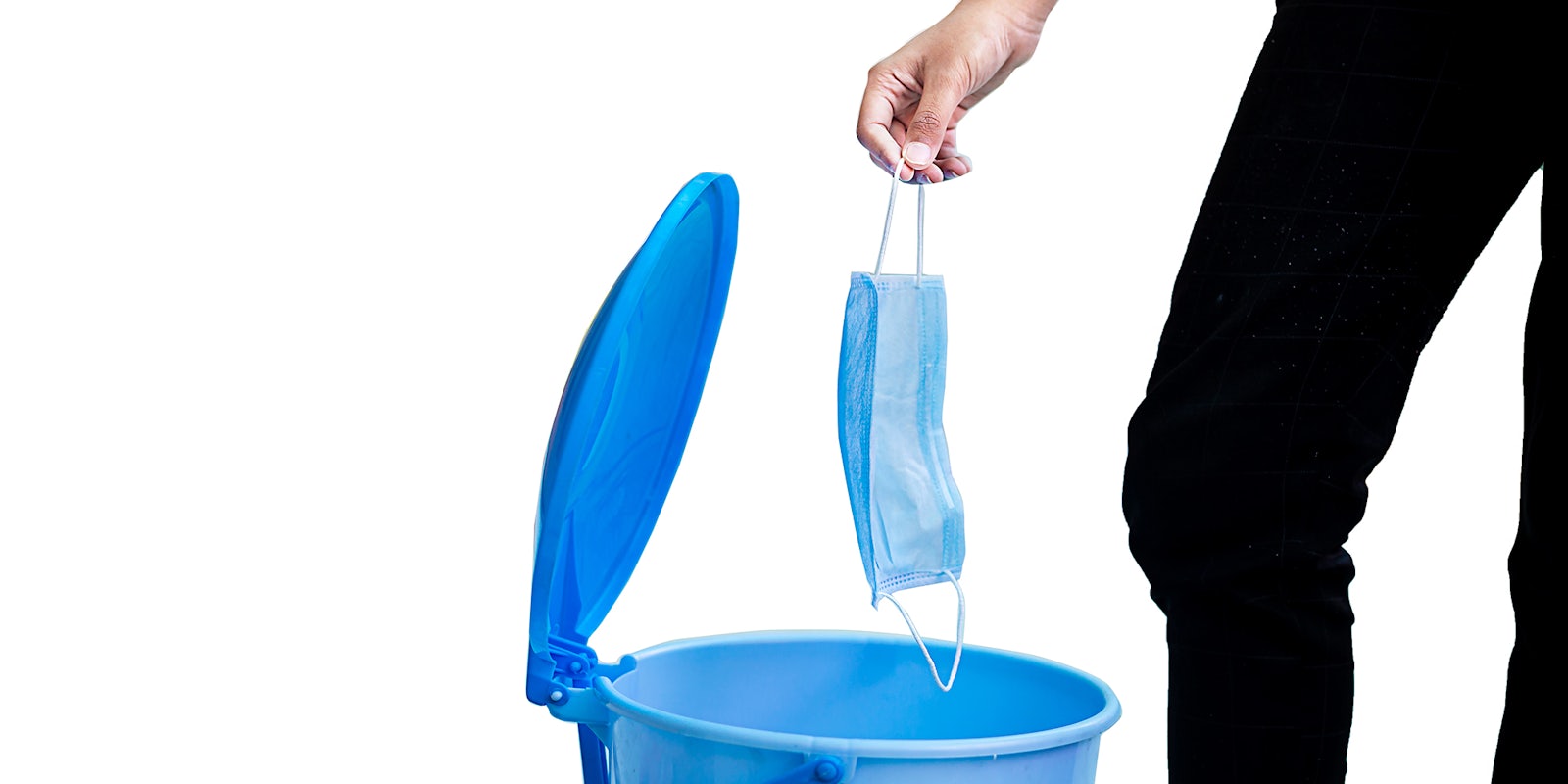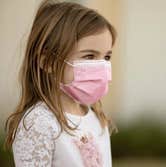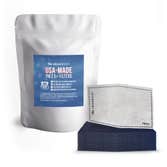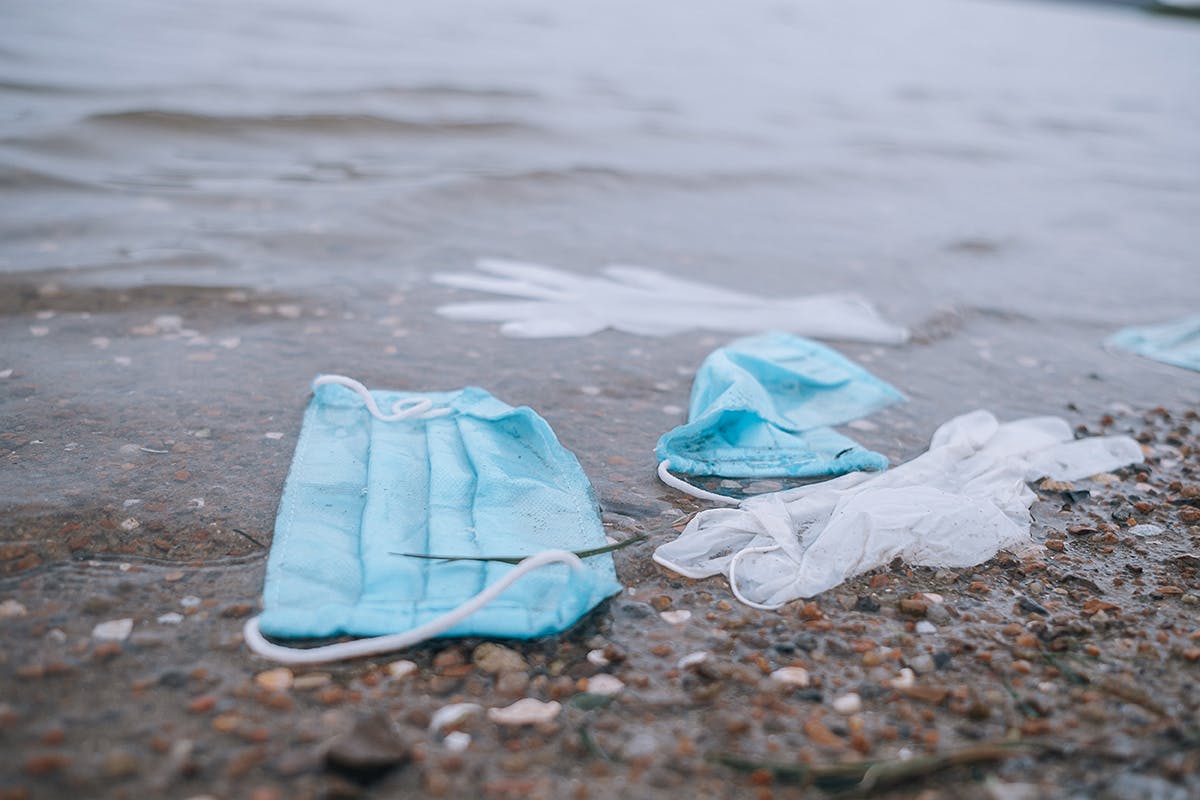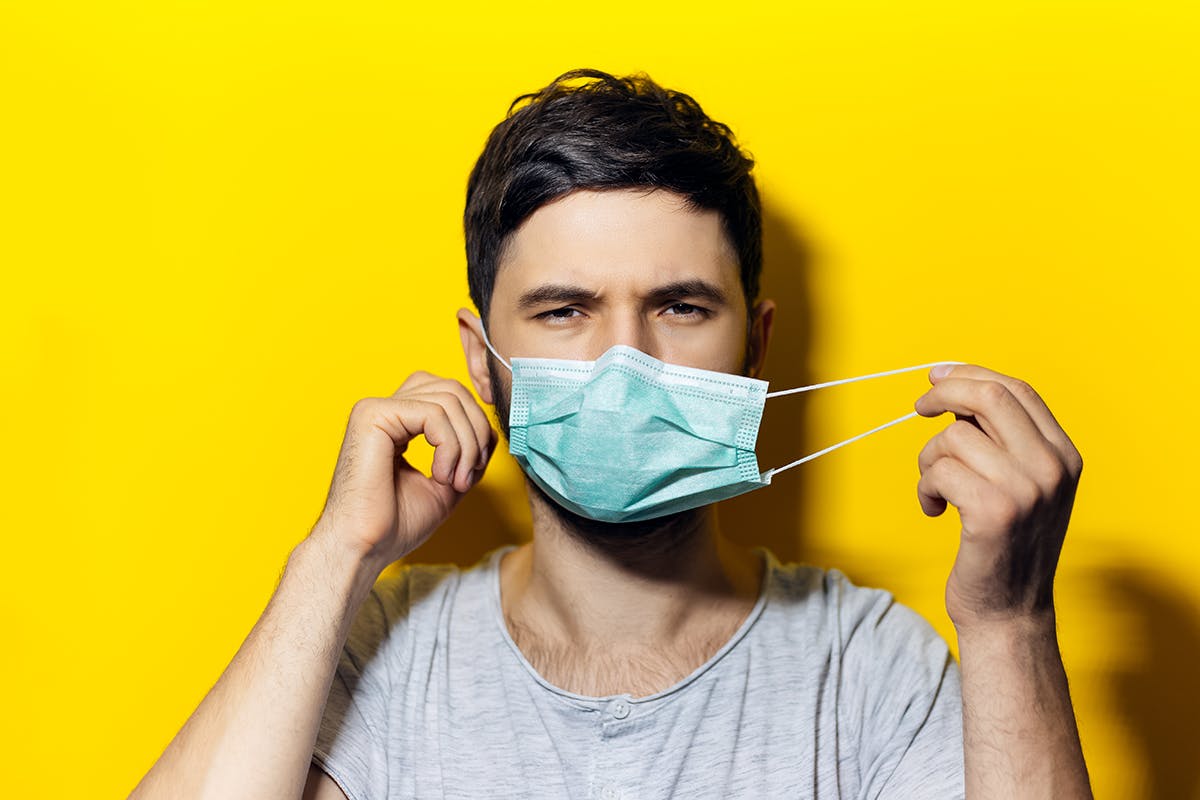Disposable masks have quickly become one of the highest-valued accessories within the last few months. And they’ll likely remain that way for the foreseeable future.
Although the CDC recommends everyone wears a reusable mask, it’s not that simple as there are currently no FDA standards on cloth masks. Plus, studies show cloth masks can vary from 2 to 38% filter efficiency. That is just not enough for an aerosolized virus. As daily cases continue to surge past the numbers that put us in lockdown over the summer, and with the added threat of flu season looming, consider switching to a more effective mask. Surgical masks are regulated to prove they meet the minimum filtration rate of 98 percent. That is enough to block .1 micron COVID particles.
Unfortunately, this translates to a helluva lot of biohazard waste and face mask germs, which is only a problem if we make it one. So how do we keep ourselves safe from COVID and avoid environmental issues with germ-laden surgical masks? It’s simple: We need to dispose of them properly.
There’s an incorrect way to dispose face masks?
It’s true, you can improperly toss out a disposable mask. Next to wearing them accurately, disposing of face masks seems to be the most technically challenging part of the process. But before I share safe ways to trash these coronavirus harvesters, here’s how to NOT dispose of them.
To start us off, let’s roast the litterbugs. On a good day, you people disgust me. But amidst a pandemic? Quite frankly, I have no appropriate language or gestures to share with you heathens. STOP THROWING YOUR MASKS ON THE GROUND. Not only is this a huge problem for the environment, but it can potentially contribute to the spread of COVID-19. How? Volunteers, sanitation workers, incarcerated folks, and the people employed at the properties where you litter are responsible for cleaning up your mess. And I mean that literally.
While you ignore anti-littering laws and in some cases risk a fine for improperly disposing of PPE, you leave the onus on members of your local community. These good people are picking up and removing your biohazard waste. This not only potentially exposes them to whatever the mask protected you from, but it also exposes them to whatever life you breathed into the mask. All of which are easily avoidable if you just throw them out.
And now for the less angry rant (nevertheless, it’s an ode to the sentiment of “YOU’RE DOING IT WRONG.”). Are you one of those people that just grabs the front of their face mask and rips it off like the Hulk before tossing it in the trash? Guess what? That’s still wrong. While you’ve made a stride of improvement from your nasty litterbug counterpart, you’re still potentially risking infection from touching your mask. Masks not only have to be worn correctly but disposed of correctly, too. Otherwise, they can be ineffective. So how do you safely remove and discard a used surgical mask? Read on.
Face mask safety 101: How to dispose of used masks
According to the World Health Organization (WHO), “If medical masks are worn, appropriate use and disposal [are] essential to ensure they are effective and to avoid any increase in [the] risk of transmission associated with the incorrect use and disposal of masks.” These experts go on to suggest that there’s only one appropriate technique to remove a mask. But don’t worry, it’s not rocket science.
The WHO recommends removing masks by handling the ear loops only (or the lace if the mask wraps around your head). Once you’ve removed the mask, you should avoid touching the outermost layer. This is where all those icky COVID-19 and other germs hang out.
Prior to throwing out the mask, the Royal Society for Prevention of Animal Cruelty (RSPCA) suggests that wearers snip the straps. This helps prevent wildlife from becoming entangled in the mask. According to the RSPCA, this has become a huge problem since lockdown began. And it’s not an issue exclusive to the United Kingdom, either, but rather something that needs to be tackled across all borders. After you snip the straps, the mask is ready for the garbage.
It’s not a bad idea to try and put your mask underneath other items in your trash bin. This isn’t a part of the official WHO or CDC guidelines, but if you have a pet or toddler the last thing you want is them picking it out of the trash. Once you’re done burying it, you should be scrubbing those hands for at least 20 seconds, baby!
If you happen to be leaving a public setting and don’t have a safe place to discard your mask, try sticking it in a Ziploc or plastic bag before tucking it into a pocket or purse. This will prevent any of the germs in the mask from transferring to other materials. Then when you get home, you can take the mask out by the loops, snip them, and proceed as usual. Just make sure to hang onto that Ziploc to reuse it next time. Let’s limit our waste as much as possible, people!

